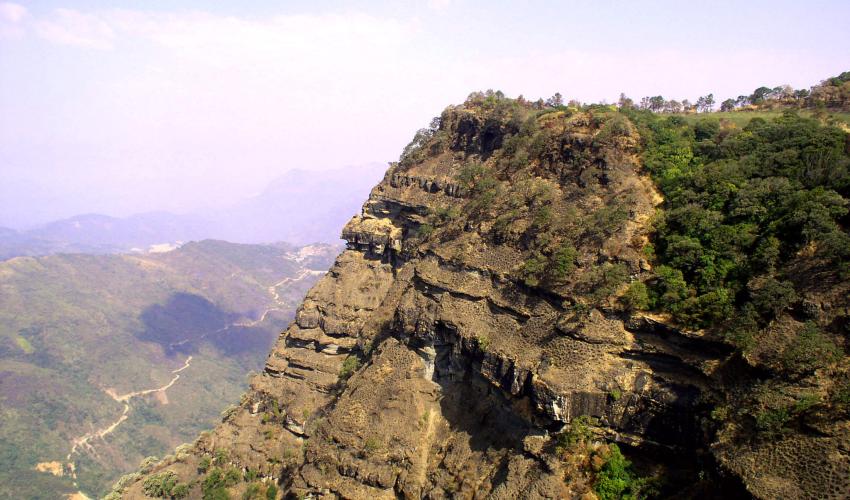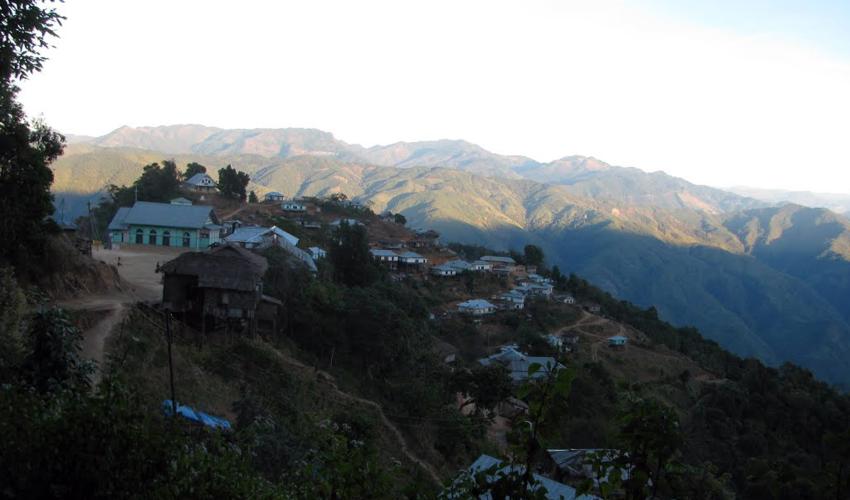Phawngpui Tlang was declared the Phawngpui Blue Mountain National Park (5,000 ha) in the year1992 by the Government of Mizoram. The landscape of the park is the natural habitat of various grasses. In the Lai dialect Phawng means “meadow”, and pui is the suffix for “great” and hence Phawngpui. It is covered most times by thin stretches of clouds which make it blue in appearance giving it the added name “Blue Mountain.” The River Kolodyne flows along the eastern side of the Park forming the international border with Myanmar.
Phawngpui has resurfaced as home to the elusive Clouded Leopard Neofelis nebulosa categorized as vulnerable by IUCN and also placed in Appendix I of CITES which bans all international trading with the animal or parts of it. It is also included in Schedule I of the Wildlife Protection Act of India, 1972.
Though the Phawngpui Blue Mountain National Park is a small protected area, it supports a very rich bird life. Kaul et al. (2001) have reported more than 125 species of birds from this site, and more are likely to occur. A survey on status of Mrs. Hume’s Pheasant Syrmaticus humiae carried out by Choudhury (2002) reveals that this species is still widely distributed in the higher hills of eastern Mizoram. There is no report from the lower western hilly tracts. Phawngpui National Park is the known westernmost locality for this species. It is considered Vulnerable by BirdLife International (2001) as it has a small, fragmented, decreasing population. Its status remain virtually unknown across a substantial portion of its historic range in Myanmar, while habitat loss and hunting continue to be major threats all over its range. This IBA site is extremely important for the survival of Mrs. Hume’s Pheasant in India. It also has good populations of Blyth’s Tragopan Tragopan blythii (Kaul et al. 2001), another Vulnerable species according to BirdLife International (2001). The Dark-rumped Swift is one of nine threatened members of the suite of 21 bird species that are entirely restricted to the “Eastern Himalayas Endemic Bird Area” (Stattersfield et al. 1998).
The Park also harbours wild animals and birds like Goral, Serrow, Barking Deer, Sambar, Leopard, Kaleej Pheasant, Hollock Gibbon, Common Langur, Rhesus Macaque and varieties of birds and orchids, rhododendrons and the beautiful daphnia blossom together with many wild plants and flowers.
Favorable season
Though the region is pleasant throughout the year, travelling to the Phawngpui Blue Mountain National Park between the months of October to April is the best. Weather during the period is nice and temperate with temperatures ranging from 11’c to 25’c. It is the best time to experience the vibrant, scenic view of the Blue Mountain enveloped in green valleys.


